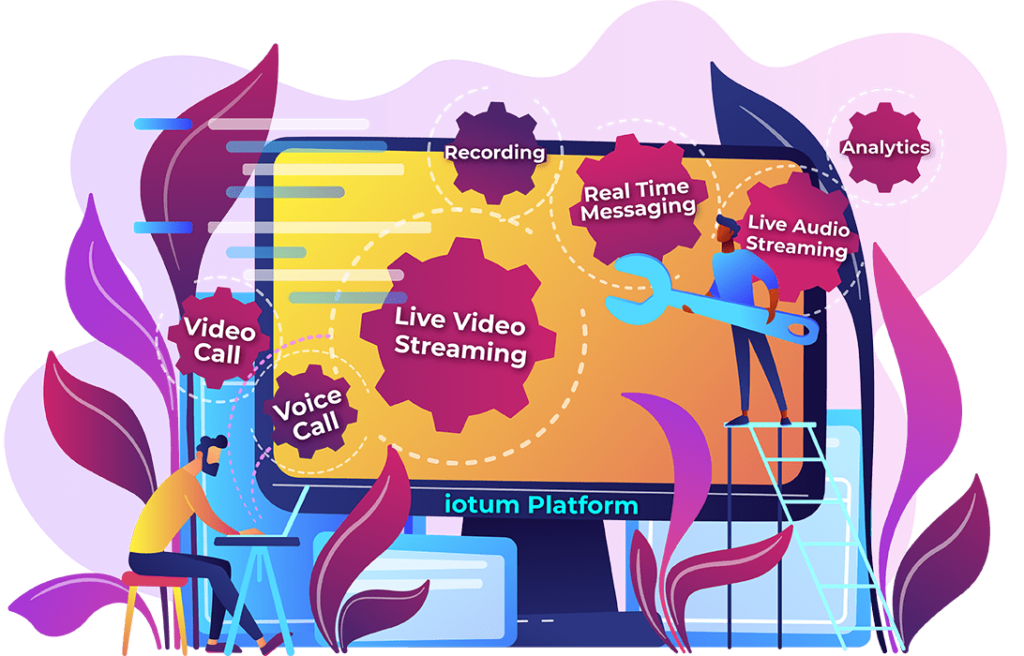 How many work meetings have you sat through? At least a handful this month. Surely you’ve found yourself in an early morning online meeting discussing the status or development of a project. If not, maybe you’ve attended a webinar, presentation, workshop, or online class. Maybe you’ve been in a brainstorming session or you’re leading a virtual sales presentation. Whichever way you’ve shown up, an online meeting typically comprises the same moving parts: Show up, and host, be presented to, and chime in.
How many work meetings have you sat through? At least a handful this month. Surely you’ve found yourself in an early morning online meeting discussing the status or development of a project. If not, maybe you’ve attended a webinar, presentation, workshop, or online class. Maybe you’ve been in a brainstorming session or you’re leading a virtual sales presentation. Whichever way you’ve shown up, an online meeting typically comprises the same moving parts: Show up, and host, be presented to, and chime in.
It’s the same formula, but it doesn’t have to be the same experience. If you’re finding that people aren’t as engaged as you’d like or if attendance is dropping off, it’s time to go back to the drawing board and see where you can improve the flow of the meeting.
Don’t worry though, it’s not as big a task as you might think! Here are a few ways you can build up meetings to make them more useful and constructive.
First things first – what makes for a useless meeting? An unhelpful meeting that could hinder more than help is what happens when no one leads it, the agenda feels sporadic, the discussion goes off track or takes too long and there are no targets to hit (a decision to make, topic to discuss, problem to solve, a solution to find, person to hire, date to agree on, etc.).
A constructive meeting? Exceptional tools plus exceptional features and practices put into motion. These are the 5 qualities that build the strength and add to the integrity of your online meeting:
1. Having A Defined Purpose And Goal
Before setting up an online meeting, ask yourself, “Must I break the workflow with a meeting?” Knowing exactly what you need will determine the nature of your request and ultimately the meeting.
From there, you can discern whether all you need is to prepare a document participants can read and provide you feedback on their own time, or if you just need one or two people to show up instead of the whole team.
2. Clearly Delegated Roles
 For an effective meeting that actually gets you somewhere, enlist the following roles and their respective individuals:
For an effective meeting that actually gets you somewhere, enlist the following roles and their respective individuals:
The Driver: The meeting leader who has brought everyone together in the first place.
The Approver: The owner or stakeholder who can make the final decision.
The Contributors: Those who have the info and data and can achieve the goal of the meeting.
The Informed People: Those who are in the know pre and post-meeting, but aren’t required to attend.
Pro-tip: Video conferencing software that integrates with project management tools and calendars is much preferred over solutions that aren’t compatible.
3. An Accommodating Structure
While all meetings should allow for some freedom and space to be impromptu, creating a container that respects people’s time and energy is the basis for meetings that inspire ideas instead of squeezing them out. Create an agenda that outlines discussion topics and use a timer to stay on track.
Make it known that individuals have a set amount of time to respond. Introduce the idea of a Parking Lot where ideas go to be “parked” if there’s potential but they’re not going anywhere right now.
4. Clear Action Points
So, everyone has said their piece and the goal that needed to be discussed now has action points and orientation. Pro-tip: Don’t end the meeting without a call to action – will there be a follow-up meeting? Who is accountable for what’s next? Does each person know what they are responsible for? What is the deadline? Ensure the proper notes are taken, recordings are made and the project management tool has been updated.
Okay, now for the fun part
5. Injecting Fun
Sure, every team has its own approach when it comes to creating company culture or adding a little dose of excitement, but maintaining that element of fun and surprise is what takes a little extra effort.
 Try breaking the ice with a question posted on the online whiteboard or arranging a professional yet lighthearted activity like Virtual Show and Tell. There are plenty of team-building exercises to choose from.
Try breaking the ice with a question posted on the online whiteboard or arranging a professional yet lighthearted activity like Virtual Show and Tell. There are plenty of team-building exercises to choose from.
Once you’ve got a firm handle on the 5 qualities that solidify what makes for a good meeting, you’re all set up to explore video conferencing features from Calbridge that shape the texture and flow of your syncs. Leave it up to the technology to make meetings constructive with features and tools that amp up presence, and engagement.
Pro-Tip: Oh, and if you really want to get the most out of your meetings (fun included) – always use video and remind participants as well.
Here’s how to move away from feeling fatigued towards feeling more fired up:
Automatic Transcription
With Callbridge’s signature feature Cue™, no one has to stress about whether they wrote “that” down. Participants don’t have to worry or miss the next sentence when Cue™ automatically transcribes recordings.
Plus, Cue™ provides speaker tags, and time and date stamps, automatically. Take notes if you want, but rest assured it’s all taken care of for you!
Gain A Deeper Understanding Of Emotions
Gauge the emotional temperature of your online meeting with Sentiment Analysis; A sophisticated feature that pulls out positive and negative emotions to give you a more thorough understanding of the nuance and meaning at play.
Bonus: View the Insight Bar to get a better indication of where and what kind of questions were asked throughout the meeting
Pull Up A Virtual Background
Let Callbridge’s array of virtual backgrounds set the scene for your arrival and presence. Choose real-world settings, abstract colors, and shapes, or upload your own custom and branded design.
Encourage Tighter Connections
Cater to smaller groups that want to connect in a space isolated from the main meeting with Breakout Rooms. Use these spaces to facilitate spin-off discussions, work on separate tasks, or 1:1 support.
Collaborate Creatively
Let participants express what they have to share using color, shape, sound, video, and images with the help of the Online Whiteboard. Everyone can add and share in real-time. You can work on it now, or save it and revisit it later.
Work with Callbridge and you’ll quickly gain traction in how your online meetings are run and attended, especially with third-party integrations including Slack and Google Calendar. Using state-of-the-art features like Sentiment Analysis, Transcription, Screen Sharing, and more, you’re already at an advantage compared to other video conferencing software on the market.

